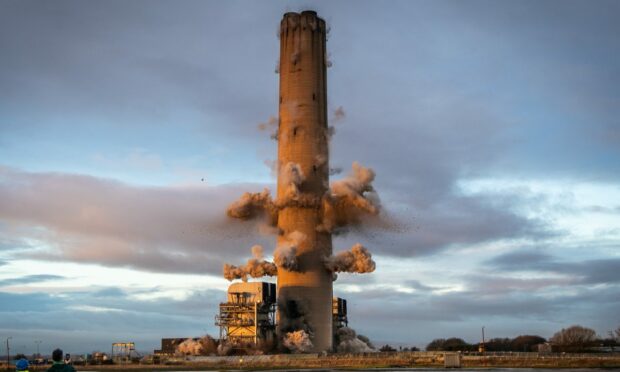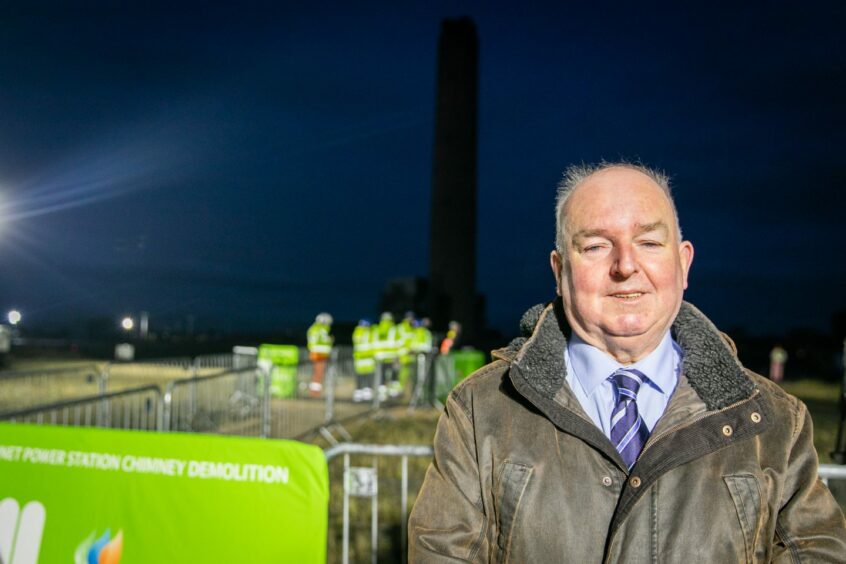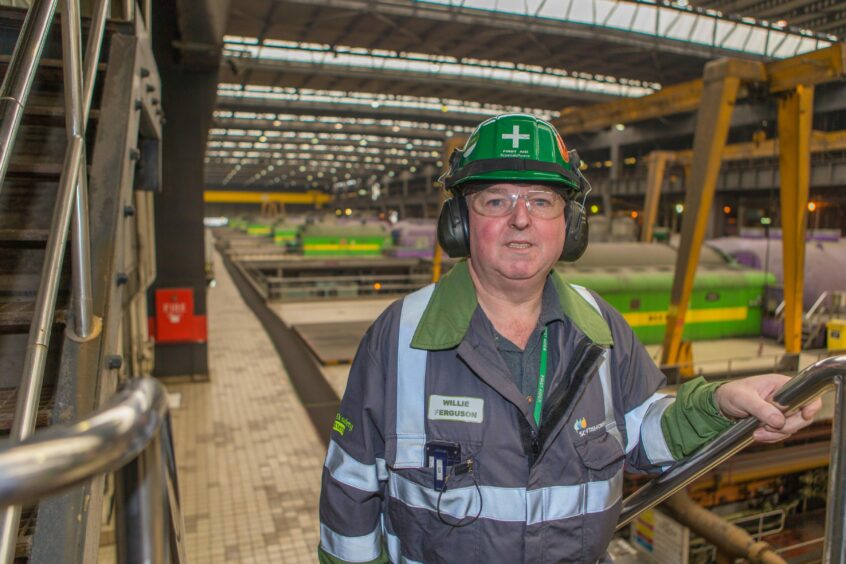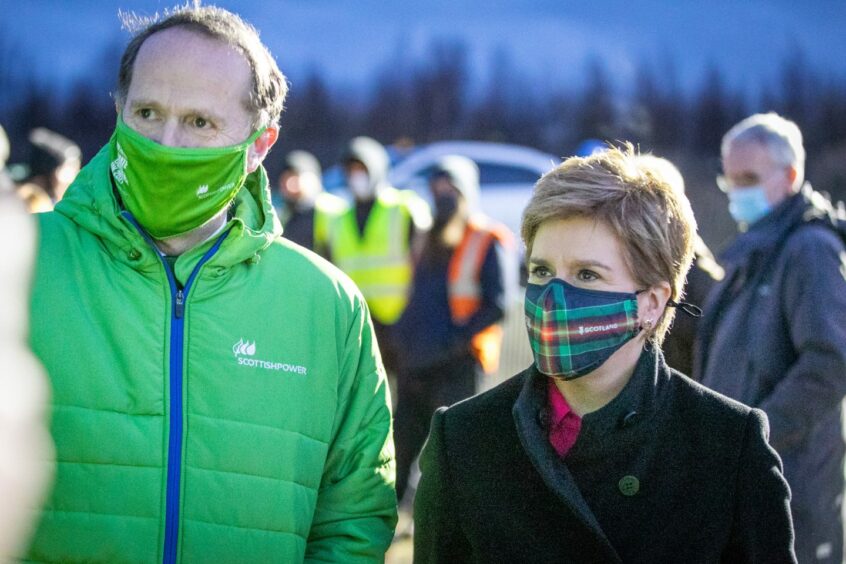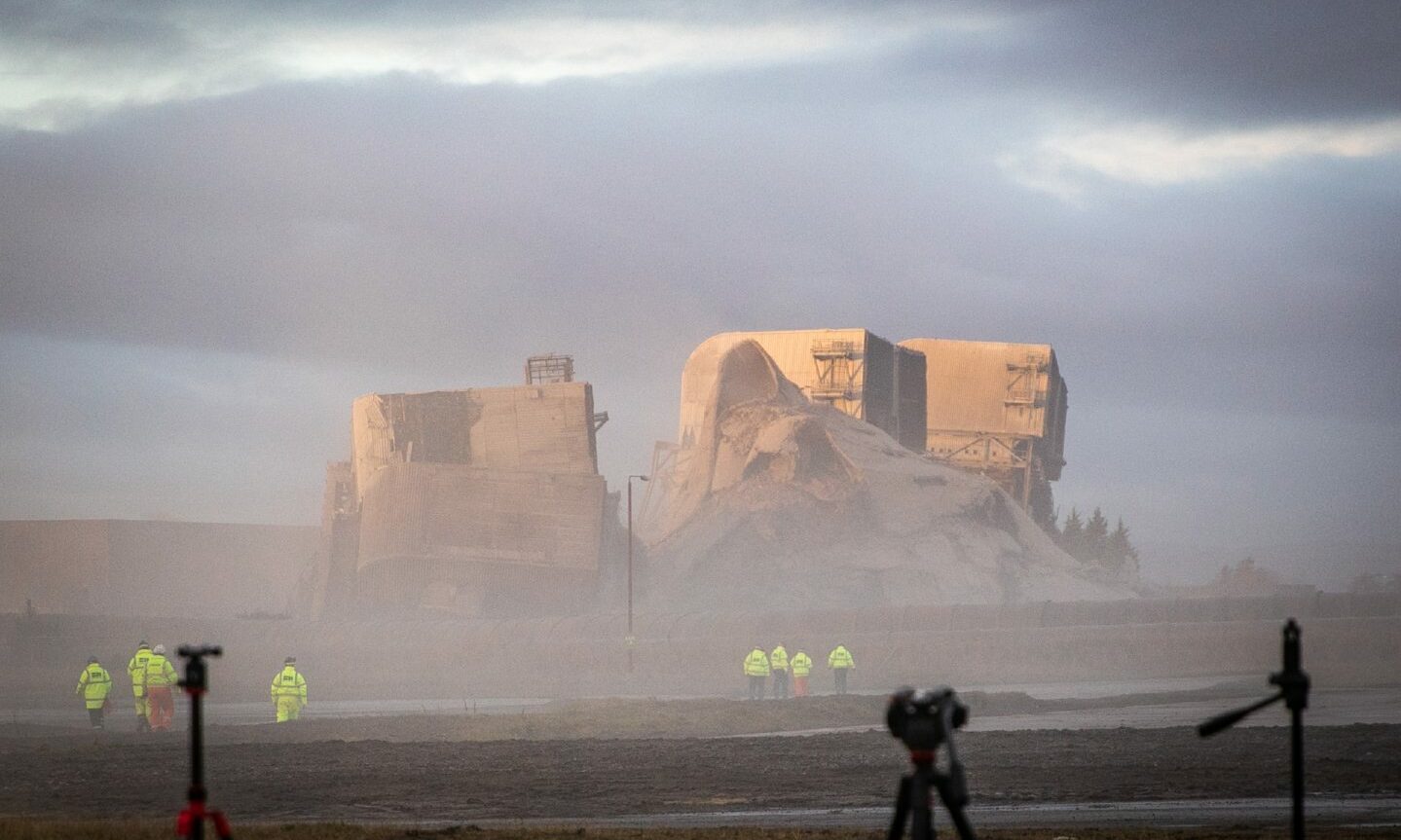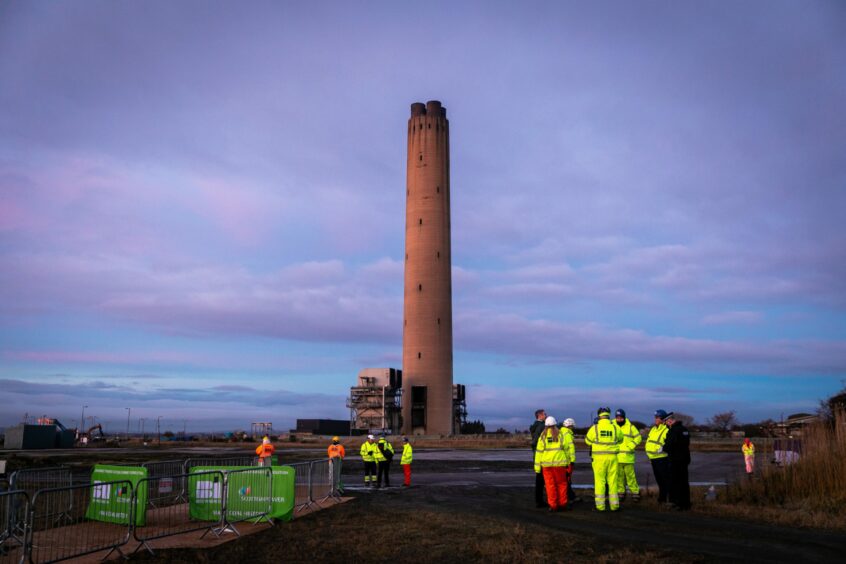It took just seconds for five decades of Longannet Power Station’s industrial history to tumble in a cloud of dust.
Opened in the early 1970s, Longannet started its life as the largest coal fired power station in Europe.
But on Thursday morning First Minister Nicola Sturgeon pressed the button to detonate 700kg of explosives.
And the last of a structure that once provided enough electricity for up to two million homes was reduced to a pile of rubble.
Longannet workforce was ‘one big family’
Among those invited by ScottishPower to watch the tower’s last moments at the site near Kincardine was former local councillor Willie Ferguson.
Willie worked at Longannet for four decades, following in the footsteps of his father.
His uncles and daughter were also employed at the plant.
“It was a huge part of my life – for myself and my family. A lot of family worked here.
“It’s sad to see it go.
“For me today is about reflecting on the amount of people I worked with. Friends, some of whom aren’t with us any more.
“That was a big part of Longannet. It was one big family.
“And it supported the local community in many, many ways.”
But he said it was time to move on.
And Willie hopes the interest that Spanish rail firm Talgo previously expressed in the site will result in new industry to sustain the local economy.
“We’ve got to move on. We’ve got to create work in the area for the youngsters coming up, and support families.
“There was talk of a rail factory coming here. Hopefully that can still happen.
“It’s a massive site so it will attract future employment, I’m sure.”
‘Bring them down, blow them up, blow them down’
Before it was closed down in March 2016, Longannet was Scotland’s last coal burning power station.
But the chimney continued to dominate the Forth skyline for another five and a half years.
Many former workers expressed sadness at the decision to demolish it.
But ScottishPower chief executive Keith Anderson said there was no other option.
He said the move was symbolic of the need to make coal burning history and address the climate crisis.
“At COP26 a few weeks ago in Glasgow, one of the main things we said was that it wasn’t enough just to shut down coal plants.
“We have to actually bring them down, blow them up, blow them down.
“Because then there can be no doubt and there can be no going back.”
Before the dynamite was detonated, the Longannet stack was Scotland’s largest freestanding structure.
The ScottishPower boss said by taking it down, Scotland was sending “a really important message” to the rest of the world.
“This isn’t a journey where you leave options open to go back the way.
“This is a one way journey, and we need to get to that net zero target.
“And with the demolition today, Scotland can truly claim that it has done that. That it has shut down, and there is no going back to coal.”
Mixed feelings over loss of landmark
Richard Hardy was a trade union official involved in the negotiations over Longannet’s closure.
He was there for the last shift in March 2016.
“I certainly have mixed feelings on the demolition of the stack.
“For so long a dominating landmark for Fifers like me, it’s sad to see its end.
“And a sadness that it also represents a workplace that provided good, high quality jobs to many thousands of workers through its lifespan now over.
“Many families saw multiple generations working there.”
However, he said the closure of Longannet had shown how Scotland is “at the forefront of a just transition to a net zero economy”.
“It’s fall also represents a real transition from coal, and there is much in that transition to be happy about.”
Overseeing the blow down was ScottishPower’s Michael Meechan, who is also a former Longannet employee.
“It’s always a sorry time to see such a big, nice piece of engineering come down.
“It’s almost been quite hard to justify getting rid of it.
“And it’s a sad day for folk who have worked here for a long time. But the days of these giant stations are done. We’re now moving on to renewables – windfarms, solar and all the rest – to decarbonise the industry.”
